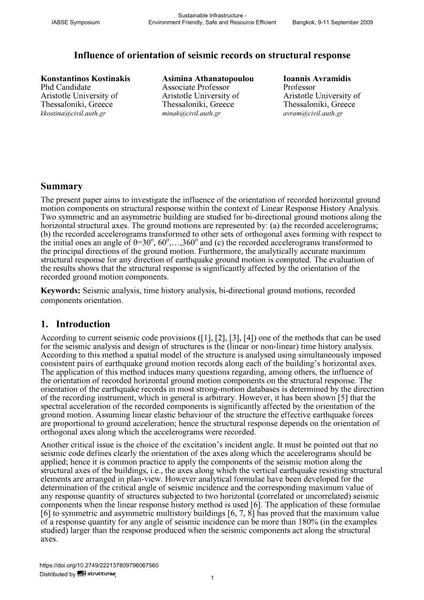Influence of orientation of seismic records on structural response

|
|
|||||||||||
Détails bibliographiques
| Auteur(s): |
Konstantinos Kostinakis
Asimina Athanatopoulou Ioannis Avramidis |
||||
|---|---|---|---|---|---|
| Médium: | papier de conférence | ||||
| Langue(s): | anglais | ||||
| Conférence: | IABSE Symposium: Sustainable Infrastructure - Environment Friendly, Safe and Resource Efficient, Bangkok, Thailand, 9-11 September 2009 | ||||
| Publié dans: | IABSE Symposium Bangkok 2009 | ||||
|
|||||
| Page(s): | 21-30 | ||||
| Nombre total de pages (du PDF): | 8 | ||||
| Année: | 2009 | ||||
| DOI: | 10.2749/222137809796067560 | ||||
| Abstrait: |
The present paper aims to investigate the influence of the orientation of recorded horizontal ground motion components on structural response within the context of Linear Response History Analysis. Two symmetric and an asymmetric building are studied for bi-directional ground motions along the horizontal structural axes. The ground motions are represented by: (a) the recorded accelerograms; (b) the recorded accelerograms transformed to other sets of orthogonal axes forming with respect to the initial ones an angle of θ=30o, 60o,…,360o and (c) the recorded accelerograms transformed to the principal directions of the ground motion. Furthermore, the analytically accurate maximum structural response for any direction of earthquake ground motion is computed. The evaluation of the results shows that the structural response is significantly affected by the orientation of the recorded ground motion components. |
||||
